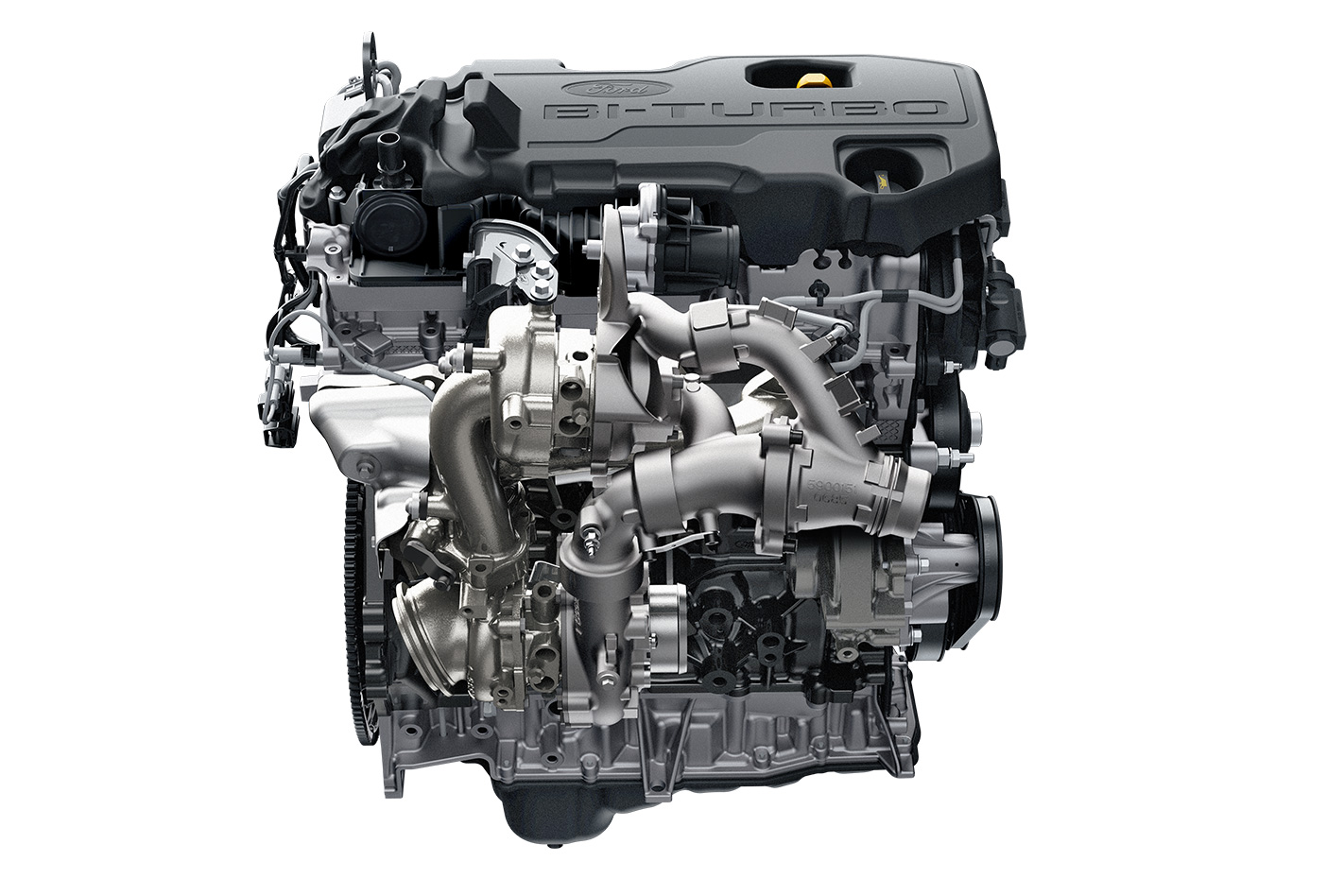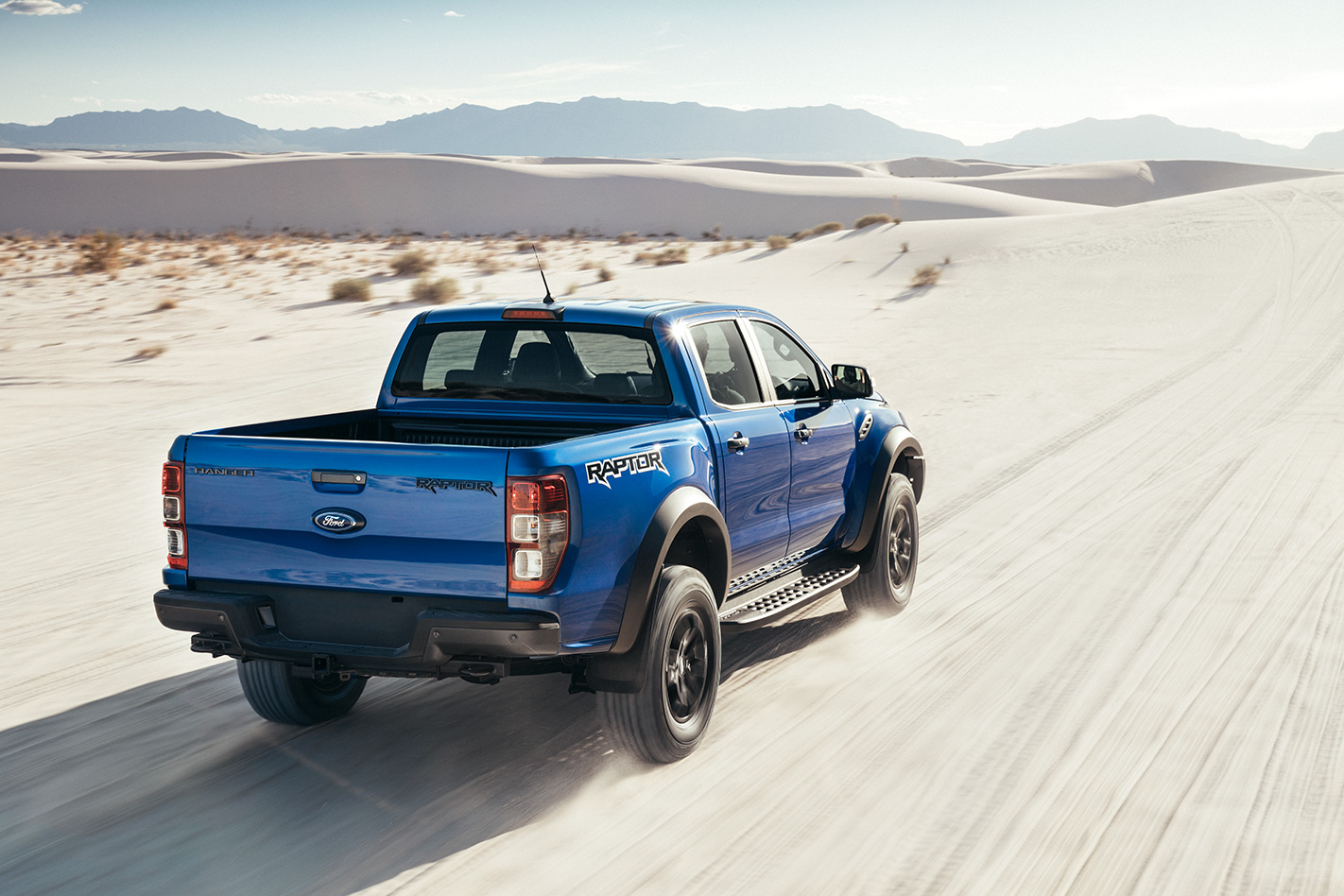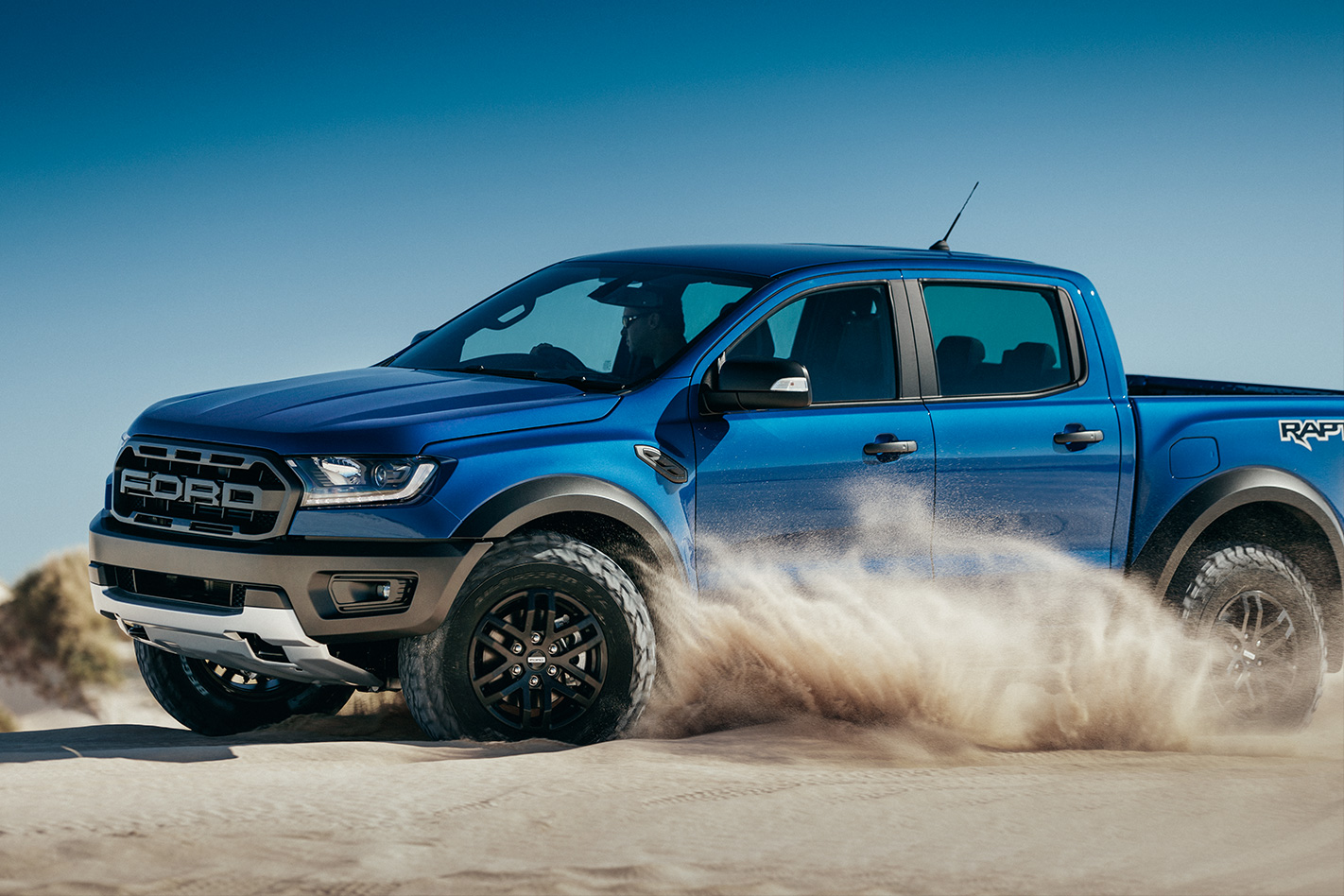BY NOW you’ve probably read a story on the headline-generating Ford Ranger Raptor.
You’ll know it has a 157kW/500Nm 2.0-litre bi-turbo diesel, that it’s running on a modified chassis with Fox Racing shocks and that it has an all-new rear suspension set up.
Well here are a few details to help flesh out the bigger picture, and highlight just how much has changed to make it one of the toughest off-road trucks you can buy.
Engine
Although Ford’s engineers told us that there is scope for additional tuning of the engine for more power, for the time being 157kW’s your lot.
Still, that’s better than you get from the regular Ranger’s 3.2-litre turbodiesel five-pot, so grumbling seems churlish. It’s a relatively high-tech diesel unit, with integrated intake manifold for more efficient air feed and a belt-in-oil primary drive.
The latter reduces friction and noise, enhances durability, fuel efficiency and, as a welcome byproduct, reduces emissions. This proven Ford tech is also maintenance-free for the life of the engine.

The two turbochargers optimise torque and power throughout rev range, allowing a secondary slug of boost at higher engine speeds where single turbo setups tend to get a bit breathy.
The turbo housing has been upgraded to a higher grade alloy to ensure durability up to 860C degrees exhaust temperature, while aluminium pistons with bowl edge re-melt improve durability. The small turbo gets variable nozzle actuation while the bigger one has fixed vanes. There’s also a water-cooled compressor cover.
Transmission
The 10-speed auto ’box features an array of interesting tech including a roller one-way clutch in the front of the casing. This helps deliver a smooth responsive drive experience when delivering high torque at low speeds.
There’s also an off-axis variable displacement vane pump, which contributes to fuel economy by lowering torque loss. By matching the pump output accurately to flow demand, high-speed NVH is improved.

With over 6 million test kilometres put on the transmission, including Baja 1000 testing, it ought to be able to handle the Birdsville Track.
Suspension
As the only production ute in the world with a Watts Link/coilover combo, the Ranger Raptor is a long way removed from the norm.
The Fox Racing shock absorbers are at the heart of this vehicle’s capability, with Ford Performance Chief Engineer Jamal Hameedi describing them as “the best off road shocks you can buy in the world. Full stop.”

Hameedi also claimed that no consideration had been made to increase fuel tank size.
“The F-150 Raptor doesn’t have a bigger fuel tank,” he told Wheels. “Given the efficiency of the engine, we didn’t see a need to increase it in this vehicle.” We’d argue the counter. Range was stated as the rationale for the diesel engine choice, so giving it more would only serve to improve what is clearly seen as a key competitive advantage.






